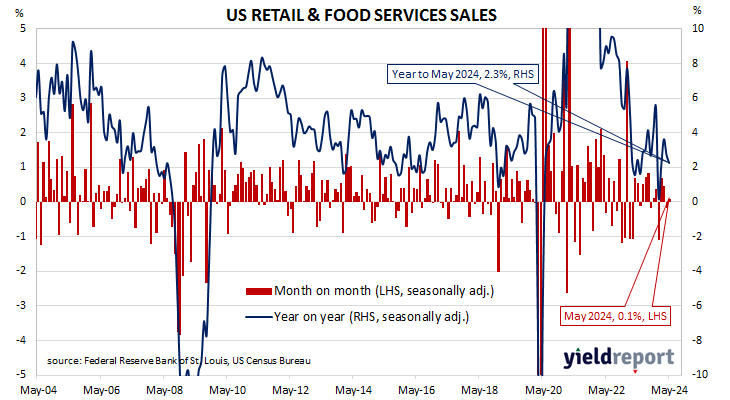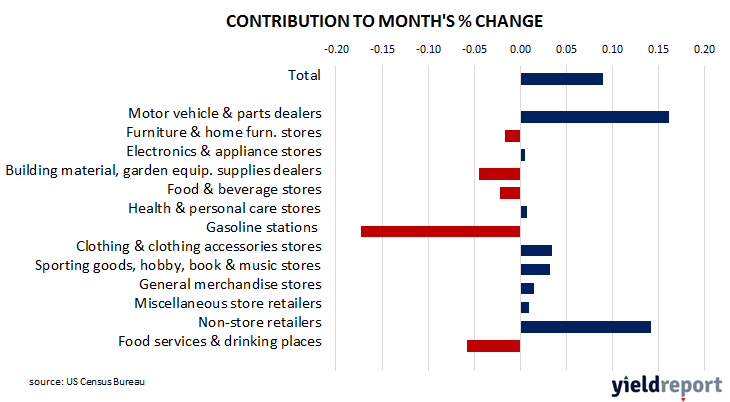Summary: US retail sales up 0.1% in May, less than expected; annual growth rate slows to 2.3%; Westpac: a sign relatively resilient consumer spending softens; US Treasury yields fall moderately; rate-cut expectations firm; higher sales in eight of thirteen categories; petrol station sales largest single influence on month’s result.
US retail sales had been trending up since late 2015 but, commencing in late 2018, a series of weak or negative monthly results led to a drop-off in the annual growth rate below 2.0%. Growth rates then increased in trend terms through 2019 and into early 2020 until pandemic restrictions sent them into negative territory. A “v-shaped” recovery then took place which was followed by some short-term spikes as federal stimulus payments hit US households in 2021. However, growth rates have slowed significantly since mid-2022.
According to the latest “advance” numbers released by the US Census Bureau, total retail sales increased by just 0.1% in May. The result was less than the 0.3% increase which had been generally expected but it contrasted with April’s 0.3% fall after it was revised down from 0.0%. On an annual basis, the growth rate slowed from April’s revised rate of 2.7% to 2.3%.
“Retail sales increased less than expected in May, a sign that consumer spending, which has remained relatively resilient despite the high interest rate environment, softened in the spring,” said Westpac Business Bank Chief Economist Besa Deda.
The figures came out the same morning as the latest US industrial production numbers and US Treasury bond yields fell moderately across the curve on the day. By the close of business, the 2-year Treasury yield had lost 5bps to 4.72%, the 10-year yield had shed 6bps to 4.22% while the 30-year yield finished 5bps lower at 4.36%.
In terms of US Fed policy, expectations of a lower federal funds rate in the next 12 months firmed, with at least four 25bp cuts currently factored in. At the close of business, contracts implied the effective federal funds rate would average 5.30% in August, 3bps less than the current spot rate, 5.24% in September and 5.075% in November. June 2025 contracts implied 4.315%, 102bps less than the current rate.
Eight of the thirteen categories recorded higher sales over the month. The “Gasoline stations” segment provided the largest single influence on the overall result, falling by 2.2% over the month and contributing -0.17 percentage points to the total. “Motor vehicle & parts dealers” and “Non-store retailer” sales also had large influences on the total, each rising by 0.8% and respectively contributing 0.16 percentage points and 0.14 percentage points..
The non-store segment includes vending machine sales, door-to-door sales and mail-order sales but nowadays this segment has become dominated by online sales. It accounts for around 17% of all US retail sales and it is the second-largest segment after vehicles and parts.



